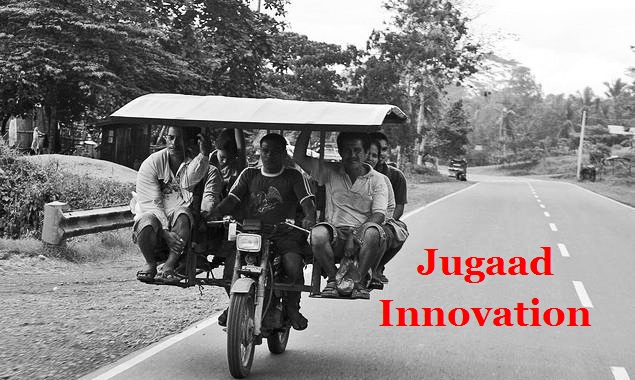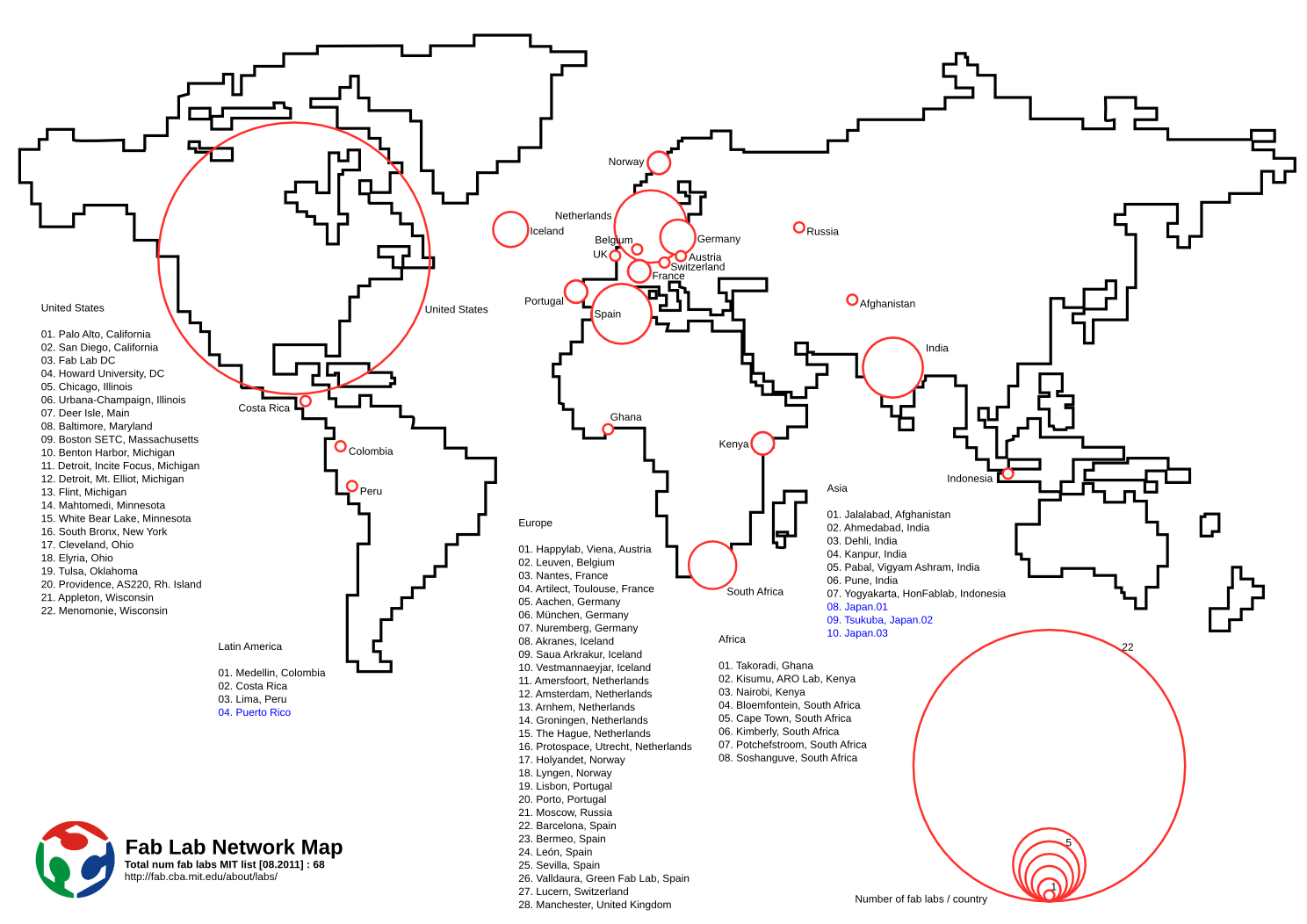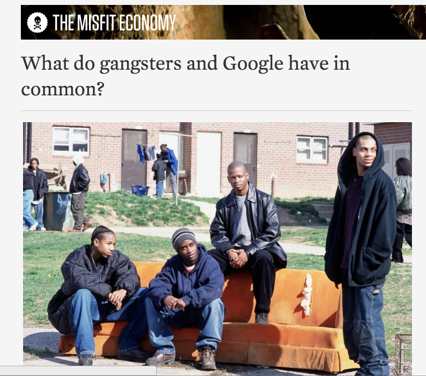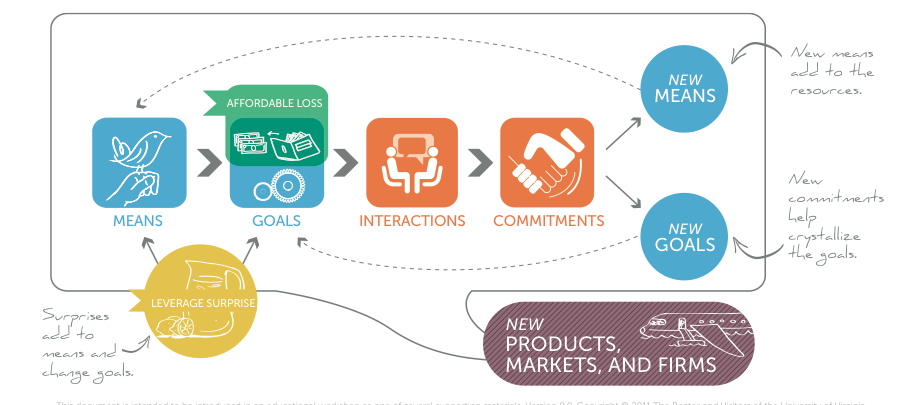Innovation—it’s all about hybridizing the right animals…
The first challenge when bringing external stakeholders to emerging markets is, of course, to defy the stereotypes. Many people have never been to Africa and are fuelled by the media’s dramatic vision of riots and political instability. Unfortunately, what makes these markets extremely appealing, high growth rates and constantly changing environment, are precisely why they are too much of a threat to the eyes of Northern investors who are looking for some kind of security.
 Yet, that is exactly what we are searching for: the “jugaad”, or kenyan “jua kali” where innovators do improvise—they try, fail, and can relive the process. It’s like a videogame where you can always gain your life back. As Navi Radjou explains it, “Corporate leaders confronted with increasing volatility and uncertainty in their own business environment must also learn to think and act flexibly.” Our main goal is thus to challenge the traditional vision of emerging cities and to show the power of improvisation of this frugal innovation: in the face of nothing, can I create something?
Yet, that is exactly what we are searching for: the “jugaad”, or kenyan “jua kali” where innovators do improvise—they try, fail, and can relive the process. It’s like a videogame where you can always gain your life back. As Navi Radjou explains it, “Corporate leaders confronted with increasing volatility and uncertainty in their own business environment must also learn to think and act flexibly.” Our main goal is thus to challenge the traditional vision of emerging cities and to show the power of improvisation of this frugal innovation: in the face of nothing, can I create something?
At The A Factor, we deepen our roots in different networks, formal and informal, in order to scout and identify sources of inspiration. That is also how our own internal process works: far from being sequential and planning a long time in advance, we generally proceed with a multiplicity of simultaneous open windows in our browsers, leveraging social media and tapping into local, regional, or international groups or networks like Sandbox or Makesense to get connected to the right people in an extremely limited amount of time. We try, we propose, we fail, we adapt and move on, constantly.
We are moved by the same spirit as Makeshift, a worthwhile print and online magazine about creativity in informal economies, displaying projects where regulations and resources may be scarce but where ingenuity is used incessantly for survival, enterprise, and self-expression.
Our main asset (but also our main struggle) is our firm belief in the power of hybridization. We believe that innovation comes out of mixing profiles or concepts that were not initially “supposed” to meet. Let’s remember not so long ago, who would have dared to mix social concepts and business? Or philanthropy and profit? Who would have thought that we could answer crucial social questions and yet be economically sustainable?
Many of the local innovators we give visibility to are social entrepreneurs, either mature and established ones, such as Ashoka and Acumen fellows, but also early stage ones in the pipeline like the Africa Yoga project, who empower youth from the slums through yoga teaching, or Mobius Motors, who build specific affordable vehicles designed for bumpy African roads.
As Alfons Cornella mentions it in his book Ideas x Valor = Resultados, “to hybridize means to create new products or services from the combination of already existing ones and to apply it to process and people, to the input, development or output of the product.”
 We are convinced that the future is all about getting the right mix: mixing money and mobile as with Mpesa, mixing engineers and makers as in Fablab, mixing guerrilla techniques with traditional video shooting as with What took you so long? This last group is using informal and flexible methods of filming to fit the context, traveling by public transport, immersing themselves in the local reality to shoot videos that have the potential to change the world.
We are convinced that the future is all about getting the right mix: mixing money and mobile as with Mpesa, mixing engineers and makers as in Fablab, mixing guerrilla techniques with traditional video shooting as with What took you so long? This last group is using informal and flexible methods of filming to fit the context, traveling by public transport, immersing themselves in the local reality to shoot videos that have the potential to change the world.
This concept of mixing also supposes the involvement of different people in a process of co-creation, of crowdsourcing the collective intelligence to solve today’s challenges together.
As Rachel Botsman once predicted, the best innovative examples will come from collaborative approaches, whether they be in the consumption patterns, or as open innovation sourcing ideas to solve corporations’ challenges through the power of the crowd. We can all challenge our traditional environments through a simple question: “Why not?” And we can use everyday ingenuity to solve problems, big and small.
It is also a question of breaking up the silos between grassroots entrepreneurs and corporations with resources, being the middleman between the underworld of ideas and the upperground of corporations, connecting the solid and established with the moving, volatile, and emerging in order to create wealth. We connect knowledge, experience, and resources with audacious individuals with crazy vision and passion. We wish to mix the inertia and sometimes brakes of more established organizations with emerging companies with little brake but little acceleration or scale up capacity.
For us, multidisciplinary is synonymous with richness. That is why we try to incorporate so many different kinds of organizations in our tours: not only tech start-ups but also political activists or university incubators as ILAB of Strath university. This mix creates the diversity that gives rise to great ideas.
We also think that contagion is key: when you are surrounded by entrepreneurs, innovators, dynamic and curious individuals, energy is contagious. Whether you’re an executive on the path to becoming an entrepreneur, or a student deciding on a career, you should be surrounded by inspiring examples of innovation!
Innovation also comes from mixing profiles within the team or the participants: with the proper structure, a retired entrepreneur from Holland can learn from a design student in Kampala and the challenge is to know how to curate this mix, how to balance it and to make it work. When everybody is talking targeting, making it specific, at The A Factor, we are fostering horizontal innovation and peer-to-peer learning.
Yet, that structured serendipity is not easy to reach. And without proper planning, it can easily be messy. There are lots of risks, like bringing in too early-stage investors who might be frustrated by the complexity of the market, or not getting the right fit between participants and local projects.
We believe that the key to adapt in our current ultra-competitive and constantly changing world is to find the right balance between the security and the risk, between business as usual and exploring new ideas, between being efficient and being different.
So when confirmed entrepreneurs in a post-validation phase like M-spark or investors are wishing to discover a new ecosystem, we search within our different networks to identify the most suitable matches for them. However, we don’t limit our program there because we know that innovation also comes from surprise: from a circus show or a visit to a mobile clinic that is not directly related to the sector or the needs of the participants, but that can challenge the group’s views  and spark its creativity.
and spark its creativity.
The key to our Innovation Tours is its element of surprise. We show our participants what we can learn from misfits, exploring the “dark side” of innovation, learn from those working under extreme constraints when traditional approaches fail.
Yet, this reverse innovation and cross fertilization we are hoping for is not always predictable. In some cases, the communication does not work and the competitive intelligence the participants or local partners are looking for is not exactly what they were expecting.
Even for ourselves, It is all about effectuation, and our own internal process is built from who we are, who we know, and what we want to do from it. We interact with others, look for commitments from other stakeholders, and try to measure our affordable loss, in case it all fails…
What is sure is that innovation is no longer confined to R&D departments of companies. Innovation has to be at the core of the whole organization, absorbed by each individual or employee to generate a real culture of idea generation. But this challenges deeply rooted cultural structures, the risk aversion, the fear of the unknown, the craving for stability and predictability.
So how to we break down these structures? We challenge our participant to get out of their comfort zones, to sing in front of the others, to listen to people from other ages and backgrounds, to spend a day in the slums working with a local entrepreneur, and to learn from themselves as well as from the others.
And to know how to scout, explore and hybridize is really the key to success.

